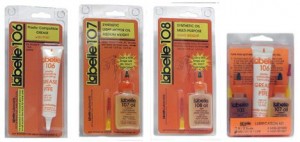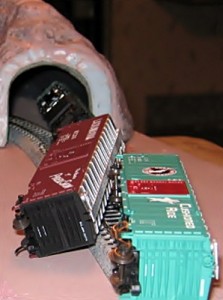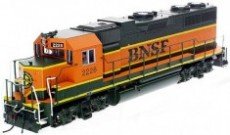Everything on model trains, model railroads, model railways, locomotives, model train layouts, scenery, wiring, DCC and more. Enjoy the world's best hobby... model railroading!
Reverse Loop Wiring Explained
This contribution from club member Harry who suggests:
“A reverse loop on your model railroad should be carefully done because faulty reverse loop can damage the locomotive and the entire wiring setup in worse cases. A reverse loop, as the name suggests, doubles back on itself so it’s important to give an electrical block for the reverse loop. You need to use an SPST switch to run power to the extended loop, which can be bought online. The DPDT switch will be used to control the power flow on the loop so that you can move your locomotive forward and backward when needed.”
Click the link to comment on this posting from Harry.
Model Train Maintenance – How to Ensure Longevity of Gears
Regular re ader Ted has been involved in the hobby for 31 years and sent in this tip:
ader Ted has been involved in the hobby for 31 years and sent in this tip:
“In my opinion the gears are the most important parts of your model train mechanics and must be inspected from time to time to identify missing tooth, poor lubrication and damage. I recommend oiling the wheels lightly at least twice in a year but you can oil the wheels whenever the running noise of your train increases. Avoid oil spreading to the traction tires because oil will reduce the grip of traction tires, resulting in the overturning of the coach. And remember oil attracts dust and dirt so you don’t want too much oil anywhere. Use an electronic track cleaner to keep your tracks clean so that tracks can maintain its conductivity. When you lubricate gears use a plastic compatible grease, because oil will simply get thrown off the gears when at high revs, and it will cover everything, whereas the grease will remain in place. However, never over lubricate the gears! Labelle make a lubricant or you could use AJ’s Magic Grease #0197 which is a non-petroleum based lubricant with Teflon. AJ’s Magic Grease works well and sticks okay to plastic surfaces.”
Click on the link to add your comments.
Desert Layout Scenery
 Although, desert layout scenery for model railroads can be bought online, you can build better layouts with a little bit of DIY knowledge. Deserts around the globe are dramatically different in color schemes and landscapes, and this should be taken into consideration while working on a plan.
Although, desert layout scenery for model railroads can be bought online, you can build better layouts with a little bit of DIY knowledge. Deserts around the globe are dramatically different in color schemes and landscapes, and this should be taken into consideration while working on a plan.
It is imperative knowing the different between warm and cool colors: cool colors will make your landscape feel farther while warm colors will make it look closer. Deserts usually have warm colors, so it is a great idea to add Sky detail or other scenery elements in cool colors to make your desert layout scenery bigger than it actually is!
This scene features the dry Australia outback.
Problems Dismantling and Moving HO Layout
It is a shame William didn’t build his HO layout in modules as he has struck a common problem. Click the link to add your comments to this posting if you can offer some suggestions for William:
“I started with a basic figure 8. But we put our home on the market, and will be moving soon. So I stopped adding to my layout. My problem now is what or is the best way to take it down for the move??”
There are lots of excellent tips in the ebook for building modular layouts at http://www.modeltrainclub.org/club.html
Bachmann DCC F7 Engine 60135
Larry has a question for others in the hobby and asks:
“Recently I was given an HO DCC F7 engine (Bachmann item # 60135). All of my other engines are DC. Can I run DCC on a layout that is set up for DC? (I was a modeler many years ago. After many moves, two kids and other reasons, I am starting back into the hobby and plan on DC operation for now.)”
Add your comment or answer to this post.
Model Railroad Interchange Building Tips
 A model railroad interchange can be built simply for the visual appeal or it can offer great functionality on larger model railroad layouts. Whatever the reason is; you have different options to try here. Some modelers build interchanges with lines fading into the terrain, suggesting that the interchange fades into the horizon.
A model railroad interchange can be built simply for the visual appeal or it can offer great functionality on larger model railroad layouts. Whatever the reason is; you have different options to try here. Some modelers build interchanges with lines fading into the terrain, suggesting that the interchange fades into the horizon.
Practical version of railroad interchanges can include staging yards to mange heavy traffic. Staging yard can help you to store coaches and it can be used to represent destinations that are not covered in your map!
How To Get Inspiration For Model Railroad Terrain?
 Our dads and granddads built model railroads with fewer resources and technology than we have access to and this shows how lucky we are. It is much easier to build a stunning model railroad terrain nowadays than the past because there are quite a few ways to find an inspiration.
Our dads and granddads built model railroads with fewer resources and technology than we have access to and this shows how lucky we are. It is much easier to build a stunning model railroad terrain nowadays than the past because there are quite a few ways to find an inspiration.
Start browsing stock photography sites like Shutter Stock for inspiring landscape pictures and try to find a high resolution version of them on the internet. There is also Google Earth to get an aerial view of rail yards. Combine a few landscapes and draw a map to plan how to design your entire railroad and execute your ideas with the right materials (and WOW! what selection of materials there is today when compared to days gone by).
Decoder Fitting Fleischmann 4376
 Reg wants to hear from someone who can advise him. If you think you can help, then please add your comments to this posting:
Reg wants to hear from someone who can advise him. If you think you can help, then please add your comments to this posting:
“How do you isolate the front and rear lights from grounding, also the body when you replace the four screws. I fitted a tcs decoder it worked fine until the body was replaced. It burnt out the decoder because of grounding of the lights. My scale is HO.”
Add your answer.
Locomotives, Tracks and Realistic Model Railroad Scenery
 Some in the hobby would say the most important requirement for a smooth running model railroad is to invest in good locomotives. Yes, good quality locomotives are essential if you want to operate your layout with the minimum of stoppages. However, there are several other key elements including: well laid track with correct gradients, adequate power for the number and length of trains, and a workable and interesting track plan. This list could go on and on, because when everything is done well it reduces the risk of problems occurring. Just one thing (e.g. a poorly aligned track) can minimize the effects of the elements that are operating efficiently. There’s an old saying, “you’re only as good as your weakest link!” It’s true!
Some in the hobby would say the most important requirement for a smooth running model railroad is to invest in good locomotives. Yes, good quality locomotives are essential if you want to operate your layout with the minimum of stoppages. However, there are several other key elements including: well laid track with correct gradients, adequate power for the number and length of trains, and a workable and interesting track plan. This list could go on and on, because when everything is done well it reduces the risk of problems occurring. Just one thing (e.g. a poorly aligned track) can minimize the effects of the elements that are operating efficiently. There’s an old saying, “you’re only as good as your weakest link!” It’s true!
It goes without saying that scenery is also important. If the scenery looks artificial it can spoil the entire layout. Buy or make realistic model railroad scenery to preserve the originality and add miniature figurines, and appropriate automobiles etc to make it look even better!
For excellent ongoing tips and ideas join the Online Model Train Club – it’s proving very popular and is improving every month.
Power For 10 or 15 Locomotives – 8 amp or 5 amp?
Graeme wants advise from other in the hobby.
“I am rejoining the hobby and looking to buy a DCC controller. I am currently setting up n scale modules, so they can keep expanding, with intention of computer interface to operate some of the trains while I do the shunts / specials etc. In total I plan for about 10 – 15 loco’s, and I was going to buy a 8 amp unit but have been told recently it might damage to locos and that I should keep to a 5 amp maximum. Does anyone have any experience / advice regards this?”
Add your comments or advice to Graeme’s post.
Adding Effects To A Fake Fire Scene
We have al ready talked about some ideas for creating a fake fire scene on your layout. The smoke unit and all the LED lights will help bring the scene to life and can all be controlled by one switch. Remember not to leave the smoke unit on too long as the smoke fluid could dry up and damage the smoke unit. To add even more reality you can blacken some of the windows in the burning building or at least dirty them so that some look damaged or broken.
ready talked about some ideas for creating a fake fire scene on your layout. The smoke unit and all the LED lights will help bring the scene to life and can all be controlled by one switch. Remember not to leave the smoke unit on too long as the smoke fluid could dry up and damage the smoke unit. To add even more reality you can blacken some of the windows in the burning building or at least dirty them so that some look damaged or broken.
You can complete the scene with fire trucks, a crowd of bystanders, fire hoses spread in all directions, and some sounds of fire crackling and / or siren sounds. There are various sound modules available to provide the sound effects including: Maxx Traxx, Dreamplayer by Pricom, HQ Sound Modules manufactured by ITTC, RAM digital sound devices, and Surroundtraxx sold by Soundtraxx.
Making Realistic Evergreen Trees
Ted has a question for others in the hobby:
“I am trying to make a large evergreen logging forest and would like to make my own evergreen trees of 3 to 8 inches in height similar to those from Grand Central Gems. I would appreciate any tips. Thanks.”
Please add your comments.
Creating The Effects Of Smoke From A Burning Building
 Smoke effects can be generated by using a fixed smoke generator – Vollmer, Faller and Seuthe manufacture units of various kinds. One of these units may helpful if you want to create a simulated fire scene in a house or building.
Smoke effects can be generated by using a fixed smoke generator – Vollmer, Faller and Seuthe manufacture units of various kinds. One of these units may helpful if you want to create a simulated fire scene in a house or building.
You can begin by making a rough hole in the roof and have some charred burnt visible boards visible as though they are ready to collapse. Areas surrounding the hole and above the windows etc., can be airbrushed with a flat dirty black paint-wash to simulate the soot. It is usually best to paint the complete interior of the building flat black, so the fire won’t show through the walls, as this could look unrealistic.The smoke generator and flickering lights and sound effects can bring the scene to life.
Model A Fire Scene With Animation Techniques
 Modeling a fire scene for model railroad can be done in many ways. LED can add a dramatic effect as can fake smoke and animated fire vehicles or crew. I once heard of someone constructing an entire area with fireproof materials and make a setup for a real fire; however that is potentially dangerous and NOT recommended. It could damage the entire network and pose serious security threat to house and family.
Modeling a fire scene for model railroad can be done in many ways. LED can add a dramatic effect as can fake smoke and animated fire vehicles or crew. I once heard of someone constructing an entire area with fireproof materials and make a setup for a real fire; however that is potentially dangerous and NOT recommended. It could damage the entire network and pose serious security threat to house and family.
The safer option is to use Circuiton Firelites Flickering Flame Circuits (depending on which of three units you use) for fake fire effects. The FF-1 unit is for smaller fires and utilizes only 1 amber bulb. The FF-2 unit uses red and amber bulbs. The FF-3 can have up to 20 bulbs, which is perfect for a larger fire in a structure, or perhaps even a forest fire.
GRS Micro Liting manufacturers the Micro Flamemaker ideal for small fires requiring 6-12v AC or DC. The Super Flamemaker is for bigger fake flames and is 16-20v AC only. The grand daddy of them all is the Ultimate Flame Master, which is ideal for larger fake fires or even to simulate burning embers. It is 12-20v AC or DC and uses up to 6 – 3volt bulbs. Connecting an AM radio to one of the units is one way to simulate flickering effects.
Model Train Collecting Ideas That You Should Know
 How to start collecting model trains and build a fascinating collection? Unlike, many hobbies, model train collecting should be done with planning. Random shopping for great deals may help you to get some excellent models but this is not a good idea to build a great collection.
How to start collecting model trains and build a fascinating collection? Unlike, many hobbies, model train collecting should be done with planning. Random shopping for great deals may help you to get some excellent models but this is not a good idea to build a great collection.
To build a great collection, you need to focus on a theme and start collecting popular models based on it so that your collection will look complete. Model train collecting can be an expensive hobby, so it is not recommended to collect without a focus as your collection will always feel incomplete.
Modular Train Layout – 3 Basic Tips For Beginners
 If you are about to build your first modular train layout, it comes without saying that it can be a fun experience. However, you can start making your task easier, provided that you follow these few simple but effective principles:
If you are about to build your first modular train layout, it comes without saying that it can be a fun experience. However, you can start making your task easier, provided that you follow these few simple but effective principles:
1. Your modular train layout should be able to be moved, so that you can easily transport it if you shift home or if you want to display your layout at a club or show.
2. Always prepare your modular train layout to withstand heavy and rough usage as parts can get knocked around in the transport process.
3. Every module that you make should easily connect to when the time comes for reassembly.
Following these effective 3 basic tips will surely help you to make a fantastic modular train layout. However, this really only scrapes the surface as there are lots more ideas to making building and operating a modular layout much easier and more fun. The member’s area of the online model train club has lots of excellent ideas including the excellent “Confessions of a Mobile Train Layout Builder” ebook.
How To Build The Best Model Railway Movements
 Model railway movements look amazing with large traffic sections, railway stations, busy classification yards, and multi-layer landscapes. If you want a fantastic looking railway movement, you need to decide a specific theme as it will keep you stay focused throughout the entire process.
Model railway movements look amazing with large traffic sections, railway stations, busy classification yards, and multi-layer landscapes. If you want a fantastic looking railway movement, you need to decide a specific theme as it will keep you stay focused throughout the entire process.
It is also worth noting that multiple high traffic sessions are not recommended for beginners as it can sometimes cause accidents. Although, model train accidents look exciting in videos, they are true disasters in real life, costing you a lot of money.
Derailments and Tunnels
 Regular blog reader John makes a wonderful contribution to the model railroading community by sharing his ideas so others in the hobby can benefit. Here is John’s latest article:
Regular blog reader John makes a wonderful contribution to the model railroading community by sharing his ideas so others in the hobby can benefit. Here is John’s latest article:
A common cause for a derailment is that the track was not put down properly. This could be an upturned rail joiner, particles from the ends of cut track that have lodged in the wheels of the locomotive or cars, dirty track, a “foreign object” that parks itself in the right-of-way, and pinched curved track that does not form a smooth, even circle. This problem becomes even worse when the wreck occurs inside a tunnel.
The first task is to get the cars out of the tunnel. If the tunnel is fixed in place and you model in a small scale, there might be a problem getting your fingers far enough inside the portals to reach the cars, but this can be remedied. Using a soft-bristled toothbrush, attach the non-brush end tightly with tape to a coat hanger to get the length, then SLOWLY and CAREFULLY pull the cars toward you with the soft brush. It might help if a flashlight is put at the other end of the tunnel to see the trapped cars. Once everything is out of there, put the same toothbrush in a bottle of liquid track cleaner and clean both rails inside the tunnel.
The last step is to check the track and to make sure the portal and tunnel is tall enough and wide enough to accept the largest car in the roster, especially around curves. Also inspect the wheels of the cars to ensure that they are riding on the rails properly, as one misaligned wheel can derail a whole train.
Thanks John!















